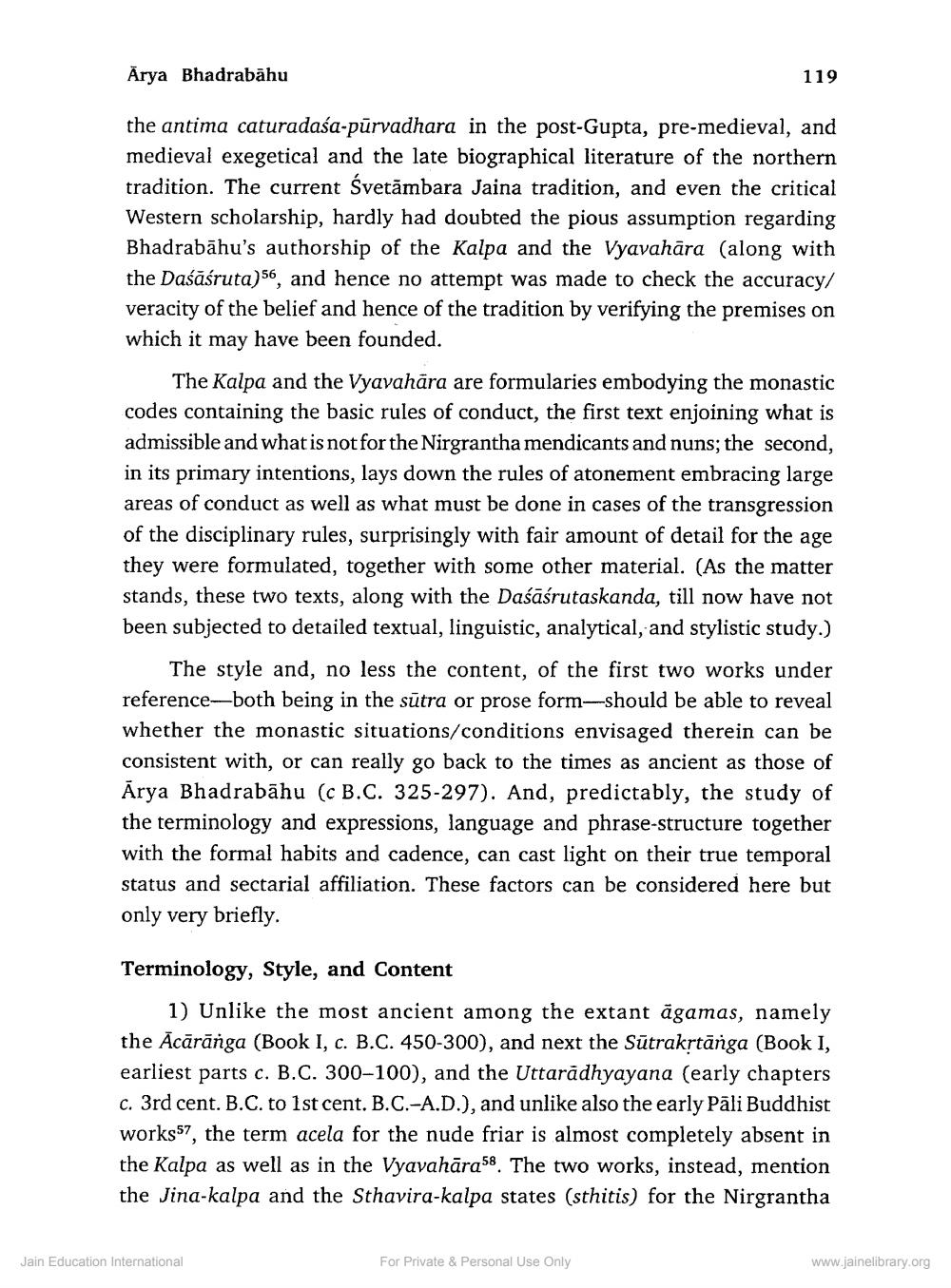________________
Arya Bhadrabāhu
119
the antima caturadaśa-pūrvadhara in the post-Gupta, pre-medieval, and medieval exegetical and the late biographical literature of the northern tradition. The current svetāmbara Jaina tradition, and even the critical Western scholarship, hardly had doubted the pious assumption regarding Bhadrabāhu's authorship of the Kalpa and the Vyavahāra (along with the Daśāśruta)56, and hence no attempt was made to check the accuracy/ veracity of the belief and hence of the tradition by verifying the premises on which it may have been founded.
The Kalpa and the Vyavahāra are formularies embodying the monastic codes containing the basic rules of conduct, the first text enjoining what is admissible and what is not for the Nirgrantha mendicants and nuns; the second, in its primary intentions, lays down the rules of atonement embracing large areas of conduct as well as what must be done in cases of the transgression of the disciplinary rules, surprisingly with fair amount of detail for the age they were formulated, together with some other material. (As the matter stands, these two texts, along with the Daśāśrutaskanda, till now have not been subjected to detailed textual, linguistic, analytical, and stylistic study.)
The style and, no less the content, of the first two works under reference-both being in the sūtra or prose form-should be able to reveal whether the monastic situations/conditions envisaged therein can be consistent with, or can really go back to the times as ancient as those of Arya Bhadrabāhu (c B.C. 325-297). And, predictably, the study of the terminology and expressions, language and phrase-structure together with the formal habits and cadence, can cast light on their true temporal status and sectarial affiliation. These factors can be considered here but only very briefly.
Terminology, Style, and Content
1) Unlike the most ancient among the extant āgamas, namely the Ācārānga (Book I, c. B.C. 450-300), and next the Sūtrakrtānga (Book I, earliest parts c. B.C. 300-100), and the Uttarādhyayana (early chapters c. 3rd cent. B.C. to 1st cent. B.C.-A.D.), and unlike also the early Pāli Buddhist works57, the term acela for the nude friar is almost completely absent in the Kalpa as well as in the Vyavahāra58. The two works, instead, mention the Jina-kalpa and the Sthavira-kalpa states (sthitis) for the Nirgrantha
Jain Education International
For Private & Personal Use Only
www.jainelibrary.org




